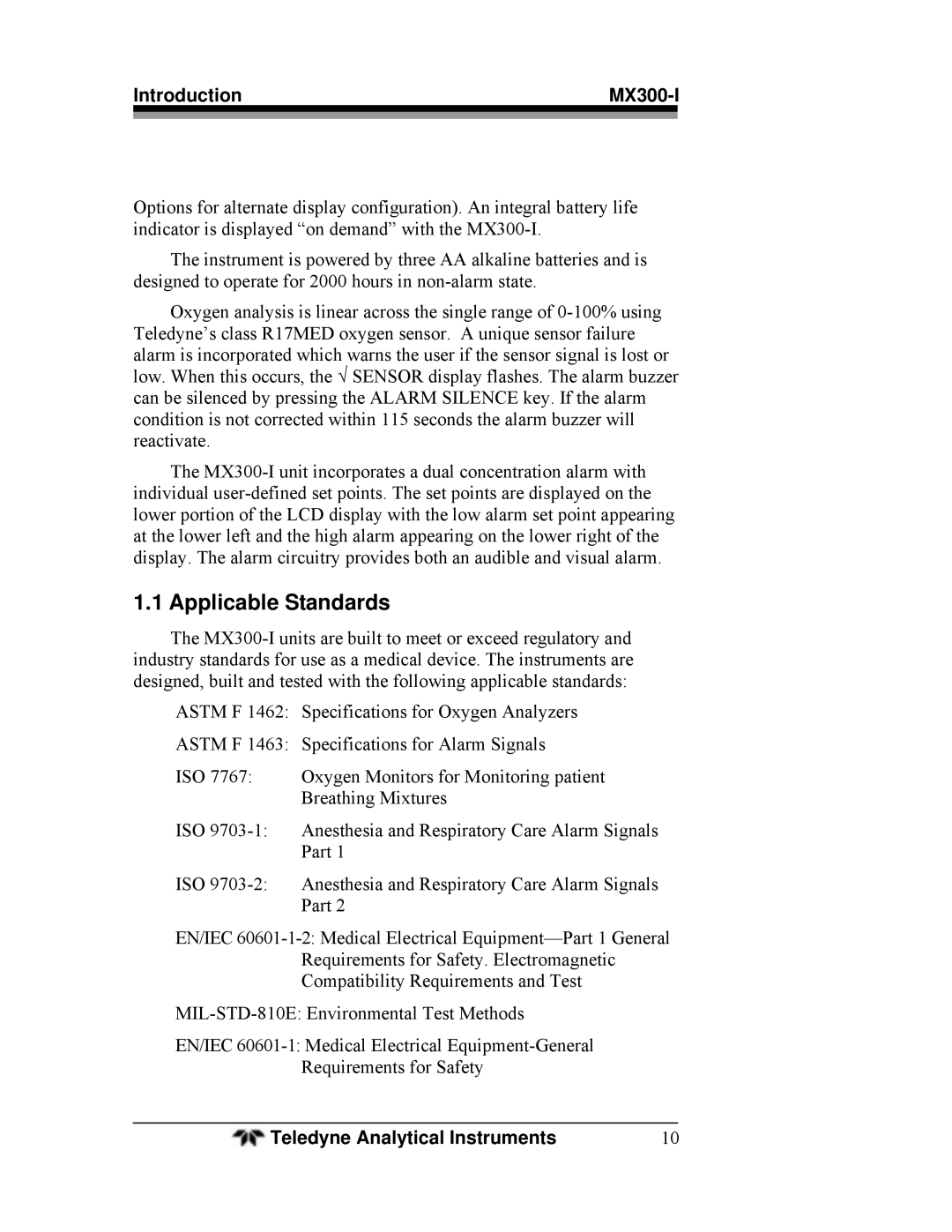Options for alternate display configuration). An integral battery life indicator is displayed “on demand” with the MX300-I.
The instrument is powered by three AA alkaline batteries and is designed to operate for 2000 hours in non-alarm state.
Oxygen analysis is linear across the single range of 0-100% using Teledyne’s class R17MED oxygen sensor. A unique sensor failure alarm is incorporated which warns the user if the sensor signal is lost or low. When this occurs, the √ SENSOR display flashes. The alarm buzzer can be silenced by pressing the ALARM SILENCE key. If the alarm condition is not corrected within 115 seconds the alarm buzzer will reactivate.
The MX300-I unit incorporates a dual concentration alarm with individual user-defined set points. The set points are displayed on the lower portion of the LCD display with the low alarm set point appearing at the lower left and the high alarm appearing on the lower right of the display. The alarm circuitry provides both an audible and visual alarm.
1.1 Applicable Standards
The MX300-I units are built to meet or exceed regulatory and industry standards for use as a medical device. The instruments are designed, built and tested with the following applicable standards:
ASTM F 1462: Specifications for Oxygen Analyzers
ASTM F 1463: Specifications for Alarm Signals
ISO 7767: Oxygen Monitors for Monitoring patient Breathing Mixtures
ISO 9703-1: Anesthesia and Respiratory Care Alarm Signals Part 1
ISO 9703-2: Anesthesia and Respiratory Care Alarm Signals Part 2
EN/IEC 60601-1-2: Medical Electrical Equipment—Part 1 General Requirements for Safety. Electromagnetic Compatibility Requirements and Test
MIL-STD-810E: Environmental Test Methods
EN/IEC 60601-1: Medical Electrical Equipment-General Requirements for Safety
